#inventive combining of mediums
Explore tagged Tumblr posts
Text
Blender's 2D animation environment seems like it's close enough to flash but with premiere's timeline that I might be able to pick it up quicker than I thought.
#like it has some blender specific stuff that comes from being a 3D animation software first#but once i understand how to export footage i might just be back in business#I'm not sure how long it's been since I've tried to animate. I'm pretty sure i don't have access to that software anymore anyway#this is encouraging#there is an overwhelming amount to take in#but this seems like the perfect software for animation compositing whatever audiovisual project#for like#inventive combining of mediums#like it might be faster for me to go shoot practical fire than it would be to learn how to make the computer do it.#and it would at least look interesting
0 notes
Text

Allegory of Peace and War
Artist: Pompeo Girolamo Batoni (Italian, 1708–1787)
Date: 1776
Medium: Oil on canvas
Collection: Art Institute of Chicago, Chicago, IL, United States
Description
Pompeo Batoni’s grand portraits and numerous religious and historical commissions established him as the leading Roman painter of his day. He painted Peace and War on his own initiative, without a commission, attracting critical praise for the work’s graceful invention. It combines elements of Rococo softness and eroticism with the newly fashionable Neoclassical style. War, represented by the god Mars, is restrained by a personification of peace, who bears an olive branch.
#allegorical art#allegorical figures#painting#allegory of peace and war#oil on canvas#artwork#fine art#landscape#oil painting#armour#helmet#peace#war#warrior#male figure#female figure#drapery#sword#olive branch#shield#italian culture#italian art#pompeo girolamo batoni#italian painter#european art#18th century painting#art institute of chicago
40 notes
·
View notes
Text
So there was this psychologist who invented a type of blood pressure test, and while testing it on his wife, he noticed her blood pressure seemed to be elevated when she was angry or excited. This fact lead to a California police officer named John Augustus Larson to develop the polygraph, aka "lie detector", by combining the blood pressure test with several other measurements in an attempt to determine if the subject is lying.
This has lead the psychologist to be known as the father of the polygraph, even though he didn't directly invent it. He definitely tried to commercialize it, though including appearing in a series of ads for Gillette Razors, using the lie detector as a theme.

A few years after the invention of the polygraph, he published a book titled "Emotions of Normal People", heavily based on the original research of his life partner (as he and his wife were in a polyamorous relationship, living together for many years (including 50 years after his death!) and having two of his children). In it, he provided a defense of many sexual taboos. In it, he developed the DISC theory: dominance, inducement, submission, and compliance. He assigned active and passive to emotions and behaviors, and environments as antagonistic and favorable, and theorized how these different attitudes and environments interacted. For example, "Submission produces passivity in a favorable environment".
This was pretty much exactly as BDSMy as it sounds, with him also having theories about how the masculine drive for freedom was inherently violent, whereas women could use their "loving allure" to lead people to an ideal state of submission to loving authority.
Anyway in 1940 he was interviewed by his life partner under a pseudonym, and said that there was great potential for education in the medium of comic books. This interview got read by Max Gaines, a comics books publisher, who co-founded All-American Publications (one of the companies that later merged with National Comics Publications to form DC Comics). The psychologist was hired on as an educational consultant.
After a conversation with his wife about creating a new super hero based on fighting with love instead of fists, he took the idea to Max Gaines and was given approval to create a comic under this idea. His wife's main contribution was the idea that the hero should be a woman.
In any case, the polyamorous psychologist with a bondage kink who had formerly helped invent the lie detector went on to develop his super hero comic based on all these influences. So in 1941, under the pseudonym of Charles Moulton (combining his name of William Moulton Marston with Max Gaines' middlename), the first issue of Wonder Woman was published under the Sensation Comics line:
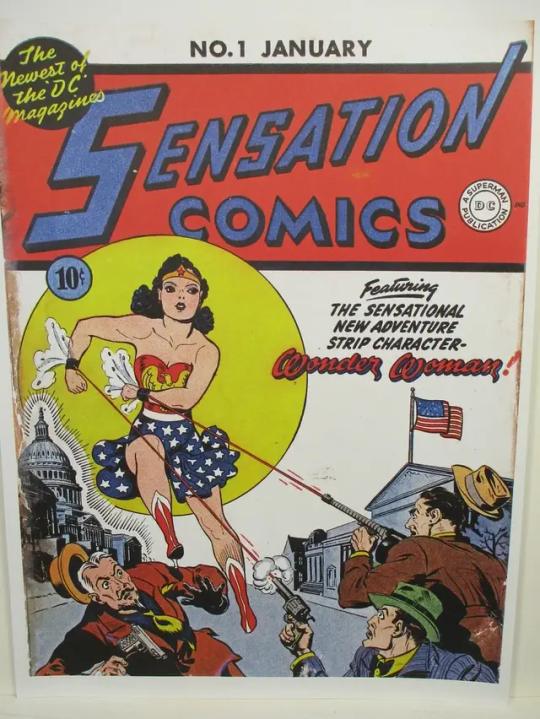
828 notes
·
View notes
Text
Armored Core, Video Games, Mecha: A Cultural Study of A Genre.
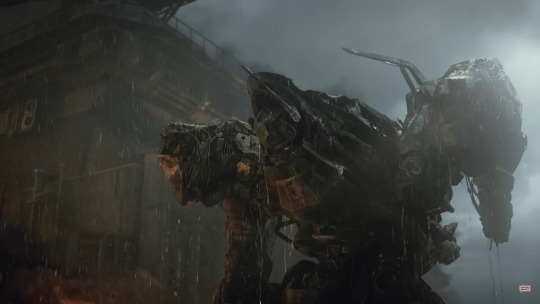
In 1997, From Software (フロム・ソフトウェア) released "Armored Core" (アーマード・コア) for the Sony PlayStation. While definitely not the first "Mecha Game" as we'll be referring to ad nauseam in this bizarre, overly long, essay thing of sorts- it more than the rest is arguable the most important. Through its mechanics, story, gameplay, and even setting- everything about Armored Core reinforces that it is the first Mecha IP made for the brand new at the time "video game medium" that fully embodied everything that defines the cultural and historical influences of the modern Mecha Genre, while redefining that genre for the newer medium. To this day, with the most recent release of "Armored Core VI: The Fires of Rubicon" in August of 2023, the series continues to uphold and redefine this legacy. Yet, what does any of that even mean?
To make a long story shortened, somewhat long once again; as we know it outside of Japan "Mecha", is a niche of a niche in some cases. Not necessarily that it's unpopular, or doesn't make an insane amount of money (which it is and does in both cases quite often), but in that it is a genre almost entirely defined by its roots in Japan, primarily through various Manga Comics and especially Animated Series. Go Nagai's (永井 豪) "Mazinger Z" (1972) is credited most often as the birth of the genre's identity, most notably as the first real breakout attempt at conceptualizing the idea of a large robot that was controlled through the use of a cockpit within the robot itself. In Go Nagai's words within the book "A Brief History of Japanese Robophilia"; "I wanted to create something different, and I thought it would be interesting to have a robot that you could drive, like a car."

From this idea and the incredible popularity of Mazinger Z, "Robot Anime" (ロボットアニメ) was born, and Go Nagai went on to create more influential works that helped further expand the genre as well as develop this particular flavor as "Super Robot". Now, Super Robot being the first and oldest sub-category to the genre makes what came after works like the aforementioned Mazinger Z and later "Getter Robo" (also from Go Nagai, 1974) fascinating from an outsider to the culture and times of the late 20th Century Japan. Without going too much into a side tangent, shows like Mazinger Z and Getter Robo were the foundation of which everything that would come to pass was built on. Discussing Mazinger Z and Getter Robo with friends and people who love it, however, the one thing that was constantly said was that "They still were and are, monster of the week animated shows", the Super Robots being genuinely not too dissimilar to how super heroes or super powered characters in other cartoons or comics were depicted other than they were both vehicle and the powers themselves. They are still shows about cool/surprising fights with evil monsters or wicked folk- and that's what they really want to be.
Not to say there's little under the surface (I would never dare to even humor a claim like that in regards to near any media), but for example- Getter Robo, which introduced the concept of "gattai" (合体), better known as "combination", where these super robots or aspects of them could "combine together" to create a bigger, stronger, or better robot- combined with the introduction of the show's "Getter Rays", the primary antagonists being what are genuinely, dinosaur aliens, Getter Robo has a very clear and distinct theme of "Evolution" that permeates through its entire core- but its also secondary to the actual point of the series from what I've been informed. To quote directly from a friend who's a massive fan and shill for the series: "This is the invention of the wheel, no one has thought to put trims on it," which is not a criticism at all- but I think it's important to especially point that out here and now that this is what the Super Robot era of early Mecha was, really cool and fun ideas for media that wanted to be surprising, fun, and fresh for the early 1970s.

The other thing that was most interesting about the era of Super Robot, was that despite robots- the powers and abilities explored in these series were supernatural or magical in nature; Getter Rays for example is quite literally, human will made manifest- allowing their machines to fire beams of energy, transform their parts, amongst several other things. Some would say it's "on the nose", but frankly it's inspired and has persisted as an idea all the way to present in even modern Mecha that isn't Super Robot.
But then, what did come after the Super Robot era of early Mecha? When a genre has only escalated and expanded, going further into the fantastical and erratic energy of its fore-bearers and contemporaries; bigger, brighter, louder- where do we look once we've waged battle with every single light in the sky? When there's no battles left to be fought with aliens, kaiju, or other such monsters that threaten to snuff out our spark, try to tango with the human spirit and its indomitable will- eventually our sights go from the stars above, back to where all battles and conflict are directed at.
Each other.

(this post is continued in a series of reblogs, be sure to check them out!)
#mecha#mech#mechs#japan#culture study#essay#writing#armored core#ac#日本#ロボット#レアルロボット#メカ#armored core 6#personal essay#mobile suit gundam#gundam#スパーロボット#Whoof I'm really nervous about this I'll be honest#The Super Robot segment is definitely going to be the weakest part#As admittedly it's the one I'm least informed on#I'm eternally grateful for my friends that are into the roots of the genre#I'm also very open to constructive criticism#this post might be stuck in eternal edit checks but HEY I POSTED IT#which is more than I thought I would#woof wow okay right#thank you everyone#Will see how this pans out#I think the first update will just be linking my sources should tumblr allow me to add anymore to this wall of text and funny gifs#now I'm just yapping
26 notes
·
View notes
Text

Cyclops
The Cyclops began production in 2710 as an assault BattleMech and headquarters unit for Star League Defense Force field commanders. A decent mix of weapons provided the Cyclops with both long- and short-range firepower and a sizable engine to keep up with mobile operations. The most important feature of the 'Mech though was its advanced electronics, especially the Tacticon B-2000 Battle Computer, which allows the pilot to effectively command up to brigade-sized units. Other aspects of the 'Mech are less than stellar however. The diverse array of weapons means the 'Mech does suffer somewhat from ammunition issues while meager armoring provides less protection than that found on similar machines, though it is enough to stave off attackers until reinforcements arrive. In particular the armoring on the head section, while as heavily protected as allowed by the internal structure, leaves the pilot and the sophisticated command and control equipment more vulnerable than usual. When operating as the command vehicle at regimental and higher echelons with an ample support apparatus and guarded by a headquarters lance, these deficiencies are far less noticeable and the Cyclops could be kept in reserve until employed to turn the tide of battle or exploit a weakness.
Unfortunately the Cyclops did not fare so well with the onset of the Amaris Civil War when the Rim Worlds Republic Military destroyed its primary factory on Caph in 2774. Spare parts for the machine quickly began to dry up, until by the end of the Succession Wars less than ten percent still had a working B-2000 computer. Lacking the critical part of being a command vehicle many Cyclopses were pressed into an assault role. Acting as the bodyguard or decoy for the real commanding officer, they proved to be swift if mediocre combat machines. As most enemies know about the vulnerable head and automatically target it in combat, many Cyclops pilots also began adding false head protectors to defend against impacts. A study by the NAIS after the Fourth Succession War would eventually find that these caused more harm than good by restricting vision and increasing shrapnel, ending the practice altogether.
The rediscovery of the Helm Memory Core kick-started a number of attempts to replicate the B-2000 computer, however there were no successful attempts prior to the Clan Invasion. Also, the invention of the C3 computer with its emphasis on small-scale networking, and a switch in doctrine to using DropShips as command posts, saw the Cyclops' command role decline. However Grumium Creations was eventually able to restart production of new variants of the 'Mech, and where it has participated a Cyclops with a working B-2000 has had noticeable effects. For this reason Cyclops 'Mechs with a working battle computer were reserved for high-ranking officers.
The Cyclops carries an arsenal built to handle almost any situation. For long-range combat and indirect fire, the 'Mech carries a Delta Dart LRM-10 missile launcher in the left torso along with one ton of reloads. For closer ranges the 'Mech has a variety of weapons. A Zeus-36, Mark III Autocannon/20 mounted in the right torso keeps all but the heaviest 'Mechs at a respectable distance and is fed by four tons of ammo split between the side torsos. The autocannon is backed up by two Diverse Optics Type 20 medium lasers, one in either arm, and a Hovertec Quad SRM-4 with one ton of reloads in the center torso.
The centerpiece of the Cyclops is its sophisticated holographic battle computer, the Tacticon B-2000. When combined with the Olmstead 840 tight beam comm suite with SatNav module, the Cyclops can effectively command a brigade across the surface of an entire world. Unfortunately the Cyclops is poorly protected relative to other assault 'Mechs with only ten tons of armor, and while its normal load of twelve heat sinks allows it to stay cool in most cases, they can prove to be inadequate in especially heavy situations.
21 notes
·
View notes
Note
It makes sense for the rules of the game to move & bend as we continue further into the narrative, given that Skaia seems to be an almost organic thing, allowed much more flexibility than if it had been a purely mechanical operation.
hey, that’s a really great point! I’ve fully been thinking about how this makes sense for telling a bigger story, but you’re right that Skaia itself is very mutable, and doesn’t have to follow so many rules. it’s like MSPA itself in that way – it doesn’t have to be coded in advance, and can respond to players’ actions as they happen.
there’s some recent developments like Rose and Dave starting out with more grist than John does as well as upgrades to their alchemiters, which make sense from both a hard game rules perspective and an organic Skaia-directed perspective. but increasingly there are things that only work from the second perspective, such as the sequence of gates. I would not be surprised if the seven gates each player builds to don’t have a defined pattern (with the possible exception of the seventh leading to the denizen) but are chosen based on where Skaia thinks the player ‘needs’ to go at the moment they enter. so that explains why the sequence is different in the main timeline vs Rose and Dave’s dark timeline, and why Davesprite’s information isn’t perfect. to be honest, if John returns to LOWAS and goes through his second gate again (if that’s even possible), I could believe that it would be in a different location and lead somewhere entirely different.
Skaia is giving each kid personalized titles and domains (at least 12 of each for at least 144 possible combinations, way more ‘types of guys’ than in most YA fiction that puts kids in categories) according to its ‘flexibile mythological framework’, as Rose calls it in her GameFAQs (p.440). On top of that, the kids have personalized planets and quests tailored to their lives before they entered the Medium (Rose’s longstanding fascination with DNA sequencing and skill at playing the violin, for example), so two Seers of Light would have wildly different game experiences. Even if their lands are all ‘Light + Natural Phenomenon’ that still leaves a big variety of options! and it might be even broader than that! it’s been said TWICE that Skaia has ‘unlimited creative potential’ (p.422, 1674), so I don’t think any of these concepts need a hard cap in-universe. there’s just the finite things Skaia invents that we see in the comic, and the infinite titles, domains, lands and quests it invents in the countless other sessions we don’t see.
it’s very very exciting because ‘how does Skaia, an organic but inhuman entity, interpret these kids?’ adds yet another layer of possible analysis. and hey, maybe it’s wrong sometimes. maybe when we find out more about what being a Seer of Light means, I’ll think ‘actually, Skaia should have made Rose a Page of Blood or a Herald of Bone’ or something. because something can be unlimited and mutable and all-knowing but understanding a person is still deeply subjective. and I will meet Skaia outside fists up if it tries to assassinate these kids’ characters in my personal opinion <3
#asks#skaia my absolute most beloved fictional entity....#so beautiful. so fascinating. so untrustworthy. so willing to destroy and manipulate peoples lives#thank you so much for the ask + sorry if im repeating myself from earlier posts at all!#chrono
16 notes
·
View notes
Text
Intersex-disabled combination survey results part 2: two flags and coinings and one non-result
Part 1 here with flags for four other ways that intersex and disability can go together and one new coining


Left: Inter-iatrogene. an intersex person with an iatrogenic disability. Iatrogenesis is the term for when medical intervention causes illness or disability. This will often overlap with interdebility. But an intersex person who willingly chooses a surgery which causes them an unintended disability (e.g. chronic pain) would be an inter-iatrogene and not interdebilitated. An intersex person who has PTSD from a (non-medical) hate crime would be interdebiltated and not an inter-iatrogene.
Right: Interimpaired: seeing your individual case of your personal intersex variation as a disability. For example, somebody who understands their salt-wasting CAH as a disability, but is not trying to claim that everybody with CAH understands their variation that way.
Survey results: relevant details
Inter-iatrogene / intersex-associated iatrogenic disability
The matching of the candidate term "inter-iatrogene" to the meaning above had an average score of 4.3 out of 5 (where 5 is strongly agree/highly suitable). It was the highest rated candidate term for this meaning. 😀
Similarly, the flag that I'm releasing as the inter-iatrogene flag was also the top-ranked candidate flag design for this meaning. It had an average rating of 4.3 out of 5. 😀
🆕 Best as I can tell, iatrogene is not already a term in English, so I'd like to coin "iatrogene" as a term for people who have any kind of iatrogenic disability (intersex-related or not). Note: Iatrogène is already a term in French, this is me being a bilingual Canadian and importing a useful term from French rather than "inventing" it. ⚜️
Interimpaired / personal view of one's variation as a disability
In the survey I asked for people to rate suitability of different flag designs & potential term coninigs, as well as how much demand/utility they saw for each use case to even have a flag and/or coining. The two questions about demand/utility have played a big role in how I've prioritized the matchings of terms and flags.
The thing about asking everybody about potential utility is that naturally the people who personally identify with a use case are going to rate the utility as higher than the people who don't personally identify with the use case. 🤔 So I set up the analysis to use weighted averages rather than straight-up averages. If a respondent self-identified with a given use case, their vote counted twice when it came to matters directly related to that that use case.
I did this to ensure that if I saw low demand for a term/flag, I could have some confidence that it wasn't just because people personally didn't identify with it. 😅
I explain all this because this case had a medium amount of demand for a flag (ranked #4 out of 10) and a low demand for a term to be coined (ranked #8 out of 10). 😕
The two highest rated flag designs for this use case had higher ratings for those other higher-demand use cases. The yellow-purple concentric rings on a grey background the best rated flag design that wasn't prioritized for a higher-demand use case. It had an average vote of 3.9 out of 5.
The term-meaning matching for this use case was 3.5 out of 5 - not super high. This was the meaning which had the highest score for the term "interimpaired". However, it was not the highest-scored term for the meaning in question: "intersex-disabled" had a score of 4.0, "interdissex" had a score of 3.9, "disintersex" was at 3.8, and "disabled-intersex" was at 3.5.
But the terms "intersex-disabled", "interdissex", "disintersex", and "disabled-intersex" all have higher ratings on terms which were perceived to have more utility, and so will be prioritized for terms that people said they'd get more use of. 👍️
No flag or term for "variation as disability"
Based on the survey results, I will not attempt to coin a term for somebody who views their intersex variation as a disability, and I'm not presently planning to release a flag either. 🤷
In the survey I presented 10 possible use cases (different meanings that a flag/term could have). This use case is for when somebody a whole intersex variation as a disability, rather than just their own case (e.g. "I have CAH and CAH is a disability." rather than "I have CAH and I personally see it as a disability but not everybody with CAH does.")
This meaning had no clear matching to a candidate term and had the lowest score in terms of potential utility (average rating of 2.5 out of 5 where 5 is strongly agree/high utility). It was also ranked #9 out of #10 for demand for a flag, and no candidate flag showed a clear association with this use case. 💀
This use case got some push-back in the open-ended question. Even though it's totally a thing for (some) intersex people to express these sorts of sentiments, the survey respondents were collectively iffy about giving that sentiment a term and/or flag. As I understand it, the people pushing back on it were displeased that somebody would attempt to speak on behalf of everybody with a given intersex variation.
I'd like to reiterate my gratitude to everybody who participated in the survey and my various polls on this tumblr! 💜
At the rate I'm going through the data, I expect I be posting two more posts on the survey results in the next day or so.
Tagging for archival: @interarchive @liom-archive @radiomogai @disabilityflagsarchive @disabilityflags
#intersex#actually intersex#disability#disability flags#intersex flags#disability pride#disabled flags#new flag#new term#survey results
34 notes
·
View notes
Text
Astrological Perspectives

While Neptune in the fifth house can foster imaginative and profound romantic partnerships, it can also breed envy and idealize love. It's important to embrace innovation and have open communication because this can lead to disappointment and blurred boundaries.
A strong work ethic is frequently fueled by Mars in the second house, especially when it comes to pursuing personal goals and financial stability. You might discover that you are spending more time on tasks that help you develop your abilities, particularly if you work in a creative field like music, art, or photography. It's a great opportunity to concentrate on developing your skills and making investments in your personal development because this placement can inspire ambition and the desire to turn passions into real outcomes. Finding a happy medium between working hard and enjoying these activities can bring happiness and financial benefits.
The 11th house of Mars energizes your social circle and involvement in the community. You're probably motivated to support causes and missions that align with your principles, which encourages you to volunteer and have a beneficial influence on your neighborhood. This pairing frequently results in the development of strong friendships, especially among like-minded people at underground gatherings and festivals. Your passion for teamwork can motivate others and facilitate connections with a wide range of people, enhancing and broadening the social experiences you have.
People who are Cancer Ascendant are protective, nurturing, sensitive, and frequently impacted by their family and home. They have a keen sense of intuition and base their decisions on emotions. Others are drawn to them because of their depth of emotion, which makes the surroundings cozy and secure.
Deep emotional feeling and optimism are enhanced by a Jupiter-Moon conjunction, which encourages inner abundance and a cheerful outlook. In loving relationships, it heightens sensitivity, joy, and intuition. This combination suggests a close relationship between personal development and family.
Purva Ashada is a Nakshatra that represents emotional depth and a quest for knowledge. It stands for idealistic people who are passionate about progress and achievement. It is associated with growth, imagination, and expression, frequently impacting creative or intellectual endeavors. But overcoming obstacles successfully calls for perseverance and fortitude.
The beauty, inventiveness, and sensuality of the Rohini Nakshatra are personified by Lily-Rose Depp, Brigitte Bardot, and Lauren London. Their performances in Rohini Sun, Moon, and Ascendant highlight their talent, nuance, and innate chemistry, highlighting Rohini's captivating traits.
Passion, desire, financial security, communication, emotional intimacy, creativity, service, commitment, intensity, shared views, job, friendships, social causes, and spirituality all have an impact on Eros in each house. Sensual pleasures and material security are important, but passion and desire are paramount. Passionate and artistic endeavors flourish, yet Eros looks for companions who provide stability and nurture. Intimacy is defined by intensity and transformation, but it is shaped by service and rituals. Relationships are also influenced by societal issues, careers, friendships, and exploration.
The traits of an Aries Moon are independence, aggressiveness, and spontaneity. They are passionate but impetuous, value honesty, and enthusiastically express their emotions. An audacious and daring emotional existence is encouraged by this placement.
The inquisitive and versatile Gemini Sun personality type is well-known for its social, intellectual, and communication traits. They may experience restlessness or inconsistency, but they appreciate intellectual stimulation and dynamic interactions. They have placed a strong emphasis on learning and communication.
28 notes
·
View notes
Text
Drive In S.R x FEM! Reader
Overture- Every year the drive in theater shows old movies for Halloween, and this time a guy caught your eye
CWs- Overdressing because of insecurity, Reader wears glasses, dresses, and tights, note passing, carrying pepper spray (but not using it)
A/N- Day 11, trying to get caught back up! This one is a little bit longer though.
Once every fall, in the middle of the week the drive-in theater near your house showed old movies. This year it was sun-down to sun-up of some of your favorites. You drove up to the little box office to get your ticket, since this place was so old they barely had a website, you couldn’t get your ticket in advance. After thanking the super cool goth girl working there, you found your spot.
This particular theater, while the medium was a little outdated- usually only showed new releases, and usually only one or two a night on weekends. For this event though they go all out, concession prices are marked down to what they were in the 50s, and old cartoon ads count down the first movie.
You got your trunk setup, turned the headlights off, and set the radio to the right station. Then you could finally head to the concession stand for a soda and a popcorn, before settling in for the night.
While you had definitely made improvements in terms of self-confidence, hell a year ago you never would’ve been able to come to something like this by yourself, you couldn’t exactly match the standard of dress everyone else had on. Typical fare for something here was pajamas, or at least sweats. And you made an earnest attempt. You must’ve tried on all the pjs you owned, every combination of sets, t-shirts, mismatched and coordinated. But the thought of other people seeing you actually wearing them made you feel so, so vulnerable. So you went with your most comfortable dress, complete with black tights and a sweater. More comfortable than jeans, and a little easier to imagine being seen in.
Realistically, no one cares. But when you walked across the lot, in front of maybe a dozen other cars, your self consciousness was a little quieter because you were wearing regular clothes. Your decision cemented itself in your brain as the right one when you saw a particularly cute guy, also overdressed in a sweater, button up, and dress pants walking the opposite direction. The brief window of what could be called confidence ended near immediately, as you promptly dropped your phone, glasses coming off as you bent down to pick it up. Awesome. That’s just awesome.
“Shit!” you wince, turning your attention to the man who was now right in front of you. And clearly just witnessed all of that. In theory you could see relatively well without your glasses, but it was getting dark out and in the fumble to get your phone, you didn’t notice him grabbing them for you. Once your phone and the last of your dignity were secured, you looked up to him pulling a glasses wipe from his pocket, cleaning them off before handing them back to you.
He had a nervous smile and immediately after handing your glasses back to you returned his hands to his pocket with quite frankly, impressive speed.
“Oh, um, thank you-that’s really, thank you. Sorry about-” You gestured vaguely to the ground and started shifting nervously in a little 2x2 box of your own making.
“It’s no problem, really. I like your glasses by the way. Did you know that glasses were invented in 1284 in Italy, but the idea of glasses was said to exist as early as 1000 BC?” You did not know that. And it was actually pretty interesting, but you unfortunately were caught off guard by the melodic sound of his rushed history lesson. You bit down on your inner cheek in an attempt to keep from beaming up at him while you tried to find a response, but he clearly took that as disinterest.
“Sorry–I–um, have a good night.” He gave a small wave and started walking past you. But you couldn’t leave it at that. He seemed like a sweet guy, and he thinks you just totally weren’t listening.
“I didn’t know that–about the glasses thing, I mean. That’s really cool that you just knew that.” In case he didn’t like you like that, you decided to back off. You gave him a smile, and mirrored his little wave before turning back around to keep walking.
You got your drink and popcorn, your head swimming with every possible other outcome from that conversation. Everything else you could’ve said, how he might have reacted, how other people would’ve acted in your place. It was a long line. There was a lot to think about.
When you began the walk back to your car in the blue glow of dusk, you noticed the car sitting next to yours. You hadn’t paid it any mind before, only briefly noting it as an interesting vintage car. But there was no one inside at the time, so you didn’t think much of it. But now there was someone inside. Windows down, stepping out of it to grab something from the trunk. The mystery man from before.
He looked as taken aback to see you as you were to see him. He must’ve walked away before you pulled in, so you just missed him. And you were going to be 8 feet away from each other, all night. So you settled for a small wave, more of a hand raise than anything, and he responded the same, still wearing a confused look, but smiling.
At this point you were pining. You didn’t even know his name, and you were pining. The first movie was starting though, so you put all of your focus on the screen. It was dark now, so even when you did give in and steal a glance (or a solid minute of intermittent staring) it was only by the glow of the projected screen.
The first movie in the lineup was the original Frankenstein, with the movies getting newer as the night goes on. When the credits started rolling, flashes of light came as families started leaving for the night. You grabbed the pepper spray from your keychain, it was late after all, and while the place was far from empty, it never hurts to be prepared. You made your way back to the small building to use the restroom and generally freshen up. Applying another thin layer of bug spray in a vain attempt to keep the summer bugs away. When you got back to your car a small folded piece of paper was waiting for you. Neatly placed on the ledge of your trunk.
I read about the history of glasses in a book on renaissance medicine. I can lend it to you sometime if you’d like.
-Spencer
Spencer. So that was his name. And maybe he did like you too, even after the couple of times he definitely did notice you looking at him. But you just averted your eyes immediately after, not letting yourself wait to see his reaction.
He was gone from his car now too, so this was the perfect chance to respond. You practically dove into your backseat to find a piece of scrap paper and a pen.
I’d like that, but I think I’d like it more if we just watched the next movie together.
-Y/N
You had to force yourself not to let out a little scream of anticipation. You’d never done something like this before, but he left a note first, so that made it a little easier. It was only halfway through the 15 minute intermission when you saw him out of the corner of your eye stopping a couple feet away from where you were sitting.
“Hi.”
“Hi. Do you want to sit?”
You moved closer to the side of the car, and he carefully sat next to you.
“So, renaissance medicine, huh? Are you a doctor, or just a big reader?” You shifted toward him, so you could look at him easier.
“Both actually, I have PHDs not an MD. But with my job, it’s good to know random information sometimes.”
“What is it you do then? Now you’ve got me curious”
“I do behavioral analysis, I work for the FBI. It’s actually pretty interesting, it used to be called behavioral science, the BSU. But they changed it to the BAU, and it’s now part of the National Center for Analysis of Violent Crime.” It looked like he had more to say but he just looked down sheepishly.
“That is interesting, I didn’t even know that was a thing.” You gave yourself a second to process all the information he’d just cited as if he was reading aloud.
“I think so, but I’m sorry I have a tendency to ramble.”
“It’s ok, it’s interesting I think. The next movie is about to start though, do you want to watch it with me?” You asked him in your note, but honestly you just wanted to hear him say it.
“I’d like that.”
#dr spencer reid#spencer reid x reader#spencer reid fanfiction#spencer reid fluff#spencer reid x fem!reader#spencer reid criminal minds
49 notes
·
View notes
Text
Let's talk Apples, Bauhaus, Ads & Kazui Mukuhara's MVs!
I've seen a lot of people talk about art history when it comes to both of Kazui's MVs, but usually, the analysis tends to focus on more surface-level aspects. I'm a bit of an art history nerd, so I thought - hey, why not, let's look into it some more when it comes to these two videos! Particularly I am focusing on 20th century art.
Everyone and their mom has already deciphered the appearance of Magritte's The Son of Man in half (Cat confirms the similarity by making a direct reference to the painting), but I'm gonna be quickly repeating it anyways without simply going off the Wikipedia summary.


The Son of Man is, like many of Magritte's works, about not giving the viewer all the details to understand the work. His photorealistic style contrasts with his phantastical subjects to create a dream-like atmosphere and to invite the viewer to step into this dream world of surrealism he's crafted. "half" borrows the surface theme of not being able to see everything about the man who is depicted, his face being obscured, almost as though he is wearing a mask.
But that's not all! The apple from this painting has been borrowed to be a symbol in Kazui's story as a whole.
The apple as a symbol of sin, desire and the downfall of man has been used in essentially all mediums of art since... the invention of abrahamic religions and the writing of the story of the garden of Eden? The Tanach/Old Testament (and, of course, the New Testament) and tales within it have inspired a lot of art symbolism (e.g. crosses, apples...) so it's not a surprise this pops up in modern anime music videos. Hell, the apple was even used as shorthand in Snow White. If you'd like to look more into apple symbolism and its origins, I'd suggest looking into this article. Especially interesting for us and theory-crafters, of course, is the 'desire' aspect of the apple symbolism.
So, "half" and "Cat" reference The Son of Man. But one connection to a painting isn't enough to warrant a theme of art history, is it? You're right! Let's talk about "Cat"'s visual style!

Many people have already pointed out Cat's print, advertisement-like style with its CMYK color scheme and torn paper at the edges. But it seems a lot of people in the fandom don't really know what this style in particular is called. The combination of these geometric shapes with print colors, slick design and the Helvetica font has its roots in Bauhaus design — it's based on the modern idea of the "Bauhaus" style.

Students of the Bauhaus school were mainly involved in designing furniture, architecture, and print design. Bauhaus' design philosophy was 'form follows function' — Walter Gropius' (the founder of Bauhaus) goal with his school was to streamline design as a whole and make mass production of designs possible. This led to a rather strict design process - students were encouraged to follow the school's motto and not add 'unnecessary' elements to their designs. This is why, more than 100 years later, designs developed in the Bauhaus school are still being used for print media and furniture.
Why is this important? What I want you to focus on in that aspect of "Cat"'s design is the inherent strictness that came with this philosophy of design. Bauhaus designs followed purpose rather than simply existing for art's sake (even originally being created with more political ideas, that being socialism, in mind).
In contrast to this, let's focus on what Bauhaus' groundwork design was used for in the late 20th century.
You might recognize the advertisement style presentation from more recent Pop Art works such as Roy Lichtenstein's big canvas works or, more famously, some of Andy Warhol's print works, which were also made by utilizing similar techniques in color and print. Particularly, you might have also drawn connections to Andy Warhol's Marylin Monroe prints.


Pop Art is (in)famously one of the most modern-culture-heavy art periods. Pop Art is all about consumerism and ads. And, in turn, consumerism and ads are about society, which is about upholding norms, which is Sometimes Also about gender and masculinity. So, we close this weird circle and we're all the way back to that suffocating masculinity theme.
The only thing in Cat that breaks away from the print ad influence is the ending section, where the background is a harsh red. That's on purpose. It's not really supposed to be part of the Pop Art world everyone that isn't Kazui seems to be living in.

I personally believe the progression from half's theater, Magritte-based symbolism to Cat's loud and modern Bauhaus/Pop Art style to be purposeful. Half gives you the story of a sad man trapped in a tragedy, Cat gives you the story of a liar who tries to embrace the societal standards that are suffocating him. While Magritte's work leads you into a world of dreams, Pop Art makes you face reality in the most obnoxious and colorful way possible.
And, really, isn't that just what Kazui is all about? Dreaming? Closing his eyes to escape the print ad reality he lives in? Waking up to see something he has never faced before, dark red, color splotches that don't fit into this ideal CMYK world, splattered on the sidewalk below?
#forgive me this is a bit all over the place... i started this months ago and then just had it sitting around#prisoner's ramblings#milgram#007#meta
36 notes
·
View notes
Text
do y'all fuck w my essay
The Shift From Broadcast TV To Made-For-Streaming Has Hurt Its Impact As A Medium
TV shows have long been one of the most widely efficient ways to share a story, but could that be on the decline? While it is considered by some to be a subpar medium, here on the tail end of the Golden Age of Television we have seen the impact a good show can make. While TV shows have invented new subcultures, or new technology (Star Trek, inspiring both the concept of Fandom and the invention of the mobile phone), and series finales have brought whole communities together (M*A*S*H’s finale, Goodbye, Farewell, and Amen, was watched in over 60% of American households), the decrease in popularity of broadcast television could be spelling an end to this. While the concept itself isn’t going away, TV has seen some major shifts over the last number of years, and a lot of it is not looking good. The rise in streaming services is bringing changes to television that negatively impact the viewers, the creators, and the content itself.
Since 2018, networks have seen a decline of over 70% in TV shows with more than 20 episodes per season (Daniel Quinaud, Why Your Favorite TV Shows Are Getting Shorter, March 15th 2024). There hasn’t been a corresponding decrease in runtime, however, with episodes ranging from 40-60 minutes long, compared to the traditional 22-25. This shift has been facilitated by streaming services, as network television was not so often able to accommodate for inconsistent episode lengths. The weekly release schedule of broadcast television also encouraged the longer seasons that used to be typical, but are no longer necessary.
Sources reason that viewers prefer a more tightly-knit narrative, and that it is a struggle to retain viewership all the way through a 20-episode season (Quinaud), but how much of that can be explained by the nature of streaming services? The average viewer is far less likely to binge through 2-dozen episodes within a week of a series being released than they are to tune in once a week for 6 months. Not only this, but the scheduled broadcast will pick up new fans over the course of its airing and rerun cycle, while Netflix (for example) has a tendency to cancel any show that isn’t an overnight success.
Whether or not the runtime itself has been decreasing, it still feels as though we, the viewers, are receiving a fraction of a TV show. They have too much plot to fit into their 6-episode mini-series, so they cut filler episodes. They cut filler scenes. They reduce any moments of chatter that fail to actively further the plot down to 20 minutes of their 200 minute run time; 10% is enough to explore our characters, how they work, how they act when they’re comfortable. Showmakers are so afraid of our boredom that they refuse to give us time to breathe. Action shows become messy and rushed, sitcoms shove an A, B, C, and D plot into each episode, and dramas give little-to-no time to process emotions because they need your attention. They cannot risk you losing interest.
Quality isn’t the only thing suffering from the shorter seasons, which made their way into the 2023 Writers Guild of America (WGA) strikes. What could have been a stable job becomes gig work; writers are used for 8 episodes (“13 at best,” says Miranda Banks, Marymount University’s chair of film, TV, and media studies (Gili Malinsky, TV and film writers share why they’re on strike, May 13th 2023)), when, in years past, a season meant being “guaranteed to be working for about nine months every year.” This, combined with shrinking writing rooms making it harder to find a job (unrelated to streaming services), was a major blow to writers’ job security. The aforementioned trend of cancelling made-for-streaming programs after a single season was another contributing factor to the writers struggling for work, and all three were components in last year’s strike.
While they don’t have the same problems with writing rooms, actors have struggled with cancellations and short employment periods. An issue exclusive to streaming that impacts both actors and writers, however, is that of residuals. While the creatives involved receive additional earnings from cable reruns, dvd releases, and even licensing to streaming services, they were given little-to-nothing by these services themselves (a major aspect of the 2023 WGA and Screen Actors’ Guild (SAG) strikes). While necessary progress was made, the fact remains unavoidable that those who are underpaid must overwork themselves to make ends meet. As long as artists are hopping between gigs with nothing to hold them over, writing and acting quality cannot be at its best.
The scheduled nature of broadcast television brings more than just structure, though. The consistent release of new episodes, watched at the same time nation-wide, brings a sense of community to fans of the programs. While more streaming services (namely Disney+) have been picking up on the benefits of a weekly release schedule, it isn’t on the same scale (one show at a time being released weekly for a month and a half, compared to multiple channels putting out a year-round new-episode-to-rerun cycle).
Other made-for-streaming programs that drop whole seasons at once are actively limiting the potential levels of discussion around them. Most viewers can’t afford to drop everything to watch a new TV show in one sitting, and in efforts to avoid spoilers they isolate themselves from fans that can. The minority that can binge all of Stranger Things does so, stopping to talk once they’ve completed the series. In doing so, details are missed or forgotten, certain aspects of the second or third episode are glossed over in favour of the more interest premier/finale, and so on. The rush to watch as fast as possible places attention to detail, appreciation of the art form (was it well written? Well directed? How was the acting? How much attention were you paying?), and serious thought as an afterthought to staying ahead. By the time everyone has finished the series, the hype will remain for about a month. By then, there will be something new to watch.
TV shows aren’t going anywhere, but it’s difficult to not see the trends of its decline. While cable becomes less and less popular in favour of on-demand streaming, there are fewer restrictions preventing these patterns from continuing. While we have seen major victories for the workers’ rights of creatives involved, we can only hope that an effort is made on other fronts; that they keep petitioning for shorter episodes and longer seasons, to go with their larger writers’ rooms and extended break times. We can hope that weekly release schedules become more popular across various platforms, but until then, we will continue the same way we have been, lately: rather poorly.
33 notes
·
View notes
Text

[ID: A fried 'chicken' cutlet topped with tartar sauce and served with rice and a green salad; bowls of tartar sauce and miso soup are in the background. End ID]
チキン南蛮 / Chicken nanban (Japanese fried chicken with sweet-savory sauce)
Chicken “nanban” (南蛮; "barbarian" or "foreign") is a classic example of 洋食 (yoshoku)—Western-style food adapted to a Japanese palette. Chicken breast is breaded, deep-fried, and coated in a mixture of soy sauce, sugar, and vinegar to create a crispy, tangy, savoury-sweet dish.
The method of breading and deep-frying used in making chicken nanban, tempura, and other Japanese dishes was introduced by the Portuguese during the Muromachi period (16th century). Chicken nanban itself, however, is far more recent: Nao-chan diner in the Miyazaki Prefecture of Kyushu is credited with having invented it in the 1950s. Nao-chan's version of the dish does not include tartar sauce, but it is often added to provide a sharp, creamy complement to the savoury chicken.
Chicken nanban works well as a main dish served with sides of rice, soup, or salad. If you're using pre-made chicken breasts, it comes together in around half an hour.
Recipe under the cut!
Patreon | Tip jar
Serves 4.
Ingredients:
For the chicken:
4 Gardein chicken breasts, or other chicken breast substitute, thawed
1/4 cup (30g) all-purpose flour
2 Tbsp potato starch or cornstarch (optional)
2 Tbsp egg replacer (I used Bob's Red Mill)
Water
Pinch kosher salt
A few cracks of black pepper
Oil to deep fry
For the nanbanzu / 南蛮酢 (nanban sauce):
3 Tbsp Japanese soy sauce, such as Kikkoman's
3 Tbsp rice vinegar
3 Tbsp granulated vegetarian sugar
1 1/2 Tbsp mirin (for a low-alcohol version, use aji-mirin; for an alcohol-free version, replace with 1/2 Tbsp rice vinegar and 1 Tbsp sugar)
For the tartar sauce:
1/2 cup vegan mayonnaise
1/2 tsp mild Dijon mustard
2 tsp rice vinegar
1 tsp dried ground shiitake mushroom, or kombu dashi powder
1 tsp vegetarian sugar
A few small sweet pickles or 1 Japanese or Persian cucumber, diced
1/2 small yellow onion, minced
Pinch kosher salt
Pinch of MSG
Minced dill or parsley (optional)
If you eat eggs, you can replace the first five ingredients with 1/2 cup Kewpie mayo (キューピーマヨ).
Instructions:
For the nanbanzu / 南蛮酢 (nanban sauce):
1. Heat sugar and soy sauce in a small pot over medium-low heat until simmering, stirring to dissolve.
2. Add vinegar and mirin and heat for another 30 seconds. Remove from heat.
For the tartar sauce:
1. Mince the onion. If you prefer, you can submerge the minced onion in cool water for 10 minutes or so and then drain to remove some of its sharpness. Seed and mince the cucumber.
2. Whisk mayonnaise, mustard, sugar, salt, black pepper, MSG, rice vinegar, and mushroom powder together to combine. Add onion and cucumber and stir. Top with herbs. Refrigerate while preparing the chicken.
For the chicken:
1. Mix flour, starch, salt, and black pepper together on a plate or cutting board. In a small bowl, combine egg replacer with water according to package directions and allow to thicken.
2. Fill a deep fryer or medium-sized pot with several inches of a neutral oil and heat it to 340 °F (171 °C). A chopstick placed in the oil should slowly form small bubbles around its tip.
3. Coat chicken breasts with egg replacer; if it is too thick, you may need to whisk in an additional 1-2 Tbsp water.
4. First deep fry. Carefully lower one chicken breast into the oil and fry without disturbing for about 2 minutes, until the egg coating on the bottom side is cooked through and lightly golden brown. Flip over and continue to fry for another 2 minutes. Use chopsticks or a slotted spatula to remove the chicken breast onto a wire cooling rack or paper-towel-lined plate.
5. Use a slotted spoon to remove any bits of batter from the oil and re-check the temperature. Repeat with each chicken breast.
6. Second deep fry. Increase the heat slightly to raise the temperature of the oil to 355 °F (179 °C). Re-fry each chicken breast for about a minute, flipping once halfway through. Set aside.
7. Coat with nanban sauce. Place the fried chicken breasts in a shallow rimmed baking dish or tray and spoon most of the nanban sauce over them, turning over several times to coat. Reserve the rest of the sauce for serving.
8. Slice each chicken breast widthwise and transfer to an individual serving plate. Serve with additional nanban sauce, tartar sauce, rice, a green salad, or soup.


112 notes
·
View notes
Text
I got both my flu and covid shot yesterday so today I'm feeling. bad. lmao. But I also saw two movies and had fun at them both!
I'll make posts about both of them, but I guess I'll start with A Haunting in Venice because I have more thoughts about it, I think.
My non-spoilery thoughts are that I actually enjoyed it a lot more than I thought I would! The ambiance was impeccable and I think I'd watch it again just to look at it. It was very pleasantly spooky, more than I'd expected, and despite not having watched the other films, I was able to easily follow along. A lot of the acting was super fun, and Michelle Yeoh was really hot, and it was a spooky ghost story! What more could you want?
(Except subtitles, I guess, because I missed a lot of dialogue. Much more than I usually do. Kenneth Branagh's fake French accent was particularly difficult to decipher.)
Two personal things, which I thought were funny. The children's song heard repeatedly in the movie, Giro Giro Tondo, creeped me out specifically because my mother gave me a doll when I was little that she'd gotten in Italy during a business trip, and when you held its hands it sang that song. I... have a bit of a doll phobia, so I did have a moment of OH NO, IT'S THIS BITCH.
The other is that I was able to figure out the mystery very quickly because of my own special interests, which was very funny to me. I'm sorry that I am too much the target audience for this movie. ;; More on that in a minute.
spoilers below the cut
It was interesting to hear after watching the movie that the original book took place in the UK because the central spookiness of the film did feel very Italian. The old ruined palazzo, the ruinous aftereffects of the Holocaust in Central Europe, the general Vibe. But most of the main characters aren't Italian, so I suppose it makes sense...
It was definitely much darker than I had expected it to be, from a human cruelty standpoint. The allusions to the Holocaust (both when discussing Dr. Ferrier's severe PTSD after liberating Bergen-Belsen and the Romani siblings who were orphaned and forced into very dire straits to survive) were very frank and graphically discussed, which isn't something you actually see in films as often these days, and the fact that impoverished orphan children really were purposefully murdered during the plague had... very familiar vibes after being from a high-risk (and easily dismissed) group during covid.
In the end, the movie ended up being as much about metaphorical ghosts as literal ones, and I can see how a writer struggling with her wartime experiences as a nurse would end up writing a story that so blatantly grapples with the soul of humanity -- and whether it's worth protecting. The medium comparing hearing the ghosts screaming to her time as a nurse during the war treating the suffering... It does make me think about Christie's own experiences, y'know? I haven't read the book, so idk how much of it was invented for the movie, but... it did make me think about her.
As for the mystery itself... I guess there are two things to know about me. One is that I studied mithridatism (and Mithridates himself) when writing fic for Arsenic and Old Lace for YT many years ago. The other is that I wrote an original f/f fic about poisonous beekeeping around the same period. It wasn't my best work, necessarily, but I'll tell you -- I know a lot about mad honey.
So let's just say that the suspense wasn't quite as suspenseful for me lmao. From the second that one woman say "Mithridates" I was pretty ready for what was coming next, and when I saw that she kept bees and everyone kept eating honey... I mean. lmao
That said, the fact that it was very difficult to tell whether the ghostly apparitions were hallucinations or real or some combination of the two was really fun and interesting.
With Christie's Thing for poisons... I guess it's interesting how much fo the movie was about food and hunger and how food can kill you if it's not the right kind -- and how love could go the same way. The discussion of the camp survivors in Germany dying after being given milk, the children being intentionally walled up and starved to death, the siblings eating "non-food", like mice, in order to survive after being orphaned during the war... And obviously the poisoned tea from a mother whose love itself had been poisoned.
And then, y'know, the metaphor flourishing when you see how love itself, twisted into madness, was the reason why so many people had suffered and died. Rowena's fear that her daughter would leave her, Alicia's agony that her fiancé had, Olga accidentally poisoning a child she loved because she was trying to soothe her, Ferrier accidentally poisoning the concentration camp survivors when trying to nurse them back to health, Leopold's desperate attempts to protect and support his father being the exact thing that got him killed...
I'm a little too tired to pull it together into a coherent thesis statement, but... The themes are layered here. Hunger for food and for love and for companionship. Poison being added to the things you think will nourish you and those you love. The desire to be seen, by those you love and those you respect and those who you fear have forgotten you...
You have Ariadne (great name for a spinner of mysteries, btw) using a friend in order to get back her adoring public. Both Maxim and Alicia desperate for the other's attention. Poor little Leo trying to soothe his father's PTSD and being parentified at far too young an age, but desperate to be seen for the marvel he is all at once.
And Alicia's ghost, obviously, reaching out to those she'd known in life and trying to get revenge on those who'd harmed her. She wanted to be seen, too, and she wanted to be understood.
I suppose that's what the whole movie comes down to. Love and understanding and the way it can be twisted horribly even as we crave it.
The movie wasn't perfect and I suspect the subject matter will be far too dark for people expecting something like Knives Out, but I did enjoy it far more than I thought it would. The vibes were genuinely very creepy and the mystery and characters were interesting. I haven't read the book, so I can't tell you how it stacks up there.
I think, sorry Kenneth Branagh, that his casting as Poirot was probably the weakest part of the movie for me. That said, the directing was so good that I at times found myself like "sir?? why not just direct these movies and let someone else play the lead????"
(see: the lin-manuel miranda effect)
But a lot of the other acting was very good, especially Michelle Yeoh who was very hot and very interesting in her role. Boy, I was SO sad when she was the first to die because I was like "OH NO, SHE WAS SO HOT..."
/shallow
Anyway, tl;dr it was a good movie for the spooky season, even if I suspect some of the subject matter will be difficult for people to handle. (Particularly the child death.) And even if you don't enjoy the writing, the footage of Venice and the overall vibes are impeccable so you can just turn off your brain and enjoy wandering through a spooky ruined palazzo.
92 notes
·
View notes
Text

Allegory of Peace and War
Artist: Pompeo Girolamo Batoni (Italian, 1708–1787)
Date: 1776
Medium: Oil on canvas
Collection: Art Institute of Chicago, Chicago, IL, United States
Description
Pompeo Batoni’s grand portraits and numerous religious and historical commissions established him as the leading Roman painter of his day. He painted Peace and War on his own initiative, without a commission, attracting critical praise for the work’s graceful invention. It combines elements of Rococo softness and eroticism with the newly fashionable Neoclassical style. War, represented by the god Mars, is restrained by a personification of peace, who bears an olive branch.
#allegorical art#roman painter#girolamo batoni#peace#war#18th century painting#landscape#man#woman#soldier#neoclassical#mars#olive branch#allegorical scene#allegorical figures#oil painting#artwork#fine art#italian culture#italian art#pompeo girolamo batoni#italian painter#european art#rococo style#art institute of chicago
15 notes
·
View notes
Text

The Ouija board is a spiritual and magical tool from the 1890s with a long and complicated history. It has long since been treated as one of the most popular and most commercialized methods of communication with the dead, though this is not the only means of its usage: throughout its time of existence, the Ouija board has been used to solve mysteries and justify committing crimes.

The first commercial advertisements for the Ouija board appeared in the beginning of the 1890s: in 1891, a Pittsburgh toy and novelty shop published an advertisement about the board. The publication stated that the Ouija board answered questions "about the past, present and future with marvelous accuracy", could be used by those of any social class, and provided connection "between the known and unknown, the material and immaterial."
However, the Ouija board goes back to an earlier time period. It can be traced back to the Spiritualist movement that reached America in the middle of the 19th century, following a trend set by Europeans a long while prior. In 1848, the Fox sisters made an appearance, claiming that they received messages from the dead. As the board did not exist yet, the spirits still used a technique called rapping - they would allegedly tap on the walls to answer questions of the mediums.

Spiritualism in America quickly grew, aided by numerous spiritualists coming forth to the national press to share their experiences; the second half of the 19th century became the peak of it. Its popularity was not affected by the prominent religiousness of the population. One could be a spiritualist and a Christian at the same time. It was also rather selective in its adepts as claims were often spread about particular temperaments being more suited for spiritualist seances; alongside specific atmospheric, mental, and physical conditions. There was much basis for criticism and much unknown. The movement offered solace to those who lost the loved ones due to disease or wars of the difficult century. It reached as high as the White House with Mary Todd Lincoln practicing seances to contact her son.
With the growth of the spiritualist movement came the need for better, faster methods of communication; rapping was becoming obsolete. The Kennard Novelty Company from Chestertown, Maryland, was the first to respond to the popular demand and set up a manufactured production of the Ouija board in 1886.

Initially recorded in Ohio by the Associated Press, the talking board quickly fell into Charles Kennard's focus of attention. He and other investors set up a company in 1890 to produce and market the new talking boards. None of them were spiritualists, merely keen businessmen.
The name "Ouija" was not invented yet at the time. Despite common misconception, it is not a combination of the French and German words for yes. Robert Murch, a Ouija historian, considers Helen Bond, sister of one of the company's investors Elijah Bond, to be the source of the name. It is claimed that "Ouija" was a name given by the board during one of the seances when asked what they should call it. It is alleged that in order to receive a patent for the production of the talking board, Bond had to demonstrate its abilities. A patent officer requested that his name is to be spelled, accurately, with the help of the board; when that was granted, Bond and Co were permitted a patent to their "toy or game" - it happened in the year 1891.

In 1892, the company was renamed into the Ouija Novelty Company with its former employee William Fuld in control. Him and his brother Isaac initially worked together, but in 1901 Isaac Fuld & Brother's agreement was void and William received exclusive rights to produce the Ouija. Legal feuds led to the two brothers bringing the issue to court where William Fuld Manufacturing Company received an injunction against Isaac, prohibiting him from manufacturing the boards. Interestingly, and eerily enough, he never claimed to have ties with the invention of the board - and died from a fall off the roof of the very same company the board "told him" to build (1919 Baltimore Sun).

The Ouija board was met with enthusiasm by the general public. The murder of Joseph Burton Elwell, a well-known NYC gambler, attracted spiritualists in 1920s who attempted to solve it with the help of the board. In 1921, a Chicago woman was attributed to a psychiatric hospital: she was claiming that "the spirits" told her to leave her deceased mother's body in the living room for two weeks before burying her in the backyard. In 1930, two women in Buffalo, New York, murdered another woman, supposedly encouraged by the talking board. In 1958, a will of a deceased Mrs. Helen Dow Peck made the news as she left an insane $152,000 to a bodiless spirit she encountered through the Ouija.
One of the most popular cases regarding the use of the Ouija board refers to a housewife named Mrs. Curran, from St. Louis, who claimed to be speaking with a spirit of a 17th century lady called Patience Worth that passed down messages to her. It was published about in the New York Tribune in 1919. The case was taken in with much critical acclaim, the psychologists working with Mrs. Curran claiming that the spirit must have never been a real person; but the apparent difference in its intelligence as compared to Mrs. Curran must denote a degree of "subconscious" thinking.

Objects of similar properties to the Ouija board have been present in different cultures since long ago. In China, for example, there were fuji (扶乩/扶箕) boards for planchette writing that are most commonly cited to be one of the inspirations for the modern day talking boards.
After the invention of the talking board, many others followed. in 1900, George Foster Pearson invented the Cablegraph, a horseshoe magnet for spirit communication - but it was made out of wood and the creator still claimed it to attract spiritual activity. This board and earlier homemade inventions of a similar kind were titled dial boards and were practically rotating discs manipulated by the medium or the spirit.
The mysterious Spirit Planchette rose to popularity fast and steadily: it was spoken of in the press and in multitudes of books released in the 20th century. One of such books, Looking Into The Future by Will Goldston (1906), speaks of "the planchette" with much enthusiasm. It is interestingly marked that it isn't for everyone that the Planchette would write or even move - a convenient notion indeed.

The Cablegraph, or Wander Board, was said to be used at, ideally, evening hours with the person sitting down in front of it and using their fingers, which are to be "magnetized" through the help of another or without it. Then, using one's judgement of the spirit's intention, they are to rotate the disc. The concept relied on the idea of "magnetism" inherent to some humans - and, of course, possessed different degrees of reliability.
Another invention to resemble the Ouija board came forth at around the same time: created by Hudson Tuttle, it was a circle on a cardboard base with a dial attached to it so it would rotate to spell out messages. The invention was meant to be a cheap alternative for those who could not affort a proper spiritual tool from one of the bigger manufacturers. The tool was called the Psychograph by the creator himself, though, unfortunately, not many survived to our day.

Prior to the invention of the Psychograph and other similar boards, a table was a common tool used for spirit communication. Participants of seances were seated around the table, which, once the spirit was called upon, tilted in order to rap the leg against the floor. The number of taps means yes, no, or doubtful. An alphabet held up over the board could be used for more complicated questions. In 1853, a Spiritual Telegraph was invented: a round dial with a needle to point between letters.
Robert Hare, a chemistry professor, initially wished to expose table-tipping seances as a fraud but fell a believer into spiritualism himself. In 1885, he released a book Experimental Investigation of the Spirit Manifestations in which he detailed on the methods he used to prevent mediums from tricking participants of seances. Those included obstructing the mediums' line of sight, adding weights to the spiritual tools, and more. After those tests, Hare invented a Spiritoscope and presented it as a new tool to contact the spirits of the dead. Due to his obvious acceptance of the spiritualist movement, he was refused by the academia but readily welcomed into the spiritual circles: his tools flourished.

In Europe, similar devices to Hare's Spiritoscope were created in 1860s. Allan Kardec, the father of French Spiritism, invented Pytho or the Thought Reader - a variation of a dial pointer board. Little is known about the history behind similar objects in England but early patents for "spirit boards" survive. The popularity of a dial planchette never rose up to that of the Ouija board, but there are some similar devices scattered across the ages: Leonardi Studios' 1966 Phantom Wheel, Milton Bradley's 1895 Genii, Telepathic Spirit Communicator from Britain, and more.
#༺♚༻ 𝕬nima e 𝕮uore ༺♞༻#༺🜏༻ 𝕺𝔠𝔠𝔲𝔩𝔱𝔬 ༺🜏༻#occulltism#occultblr#occult history#ouija#ouija board#talking board#19th century#witchblr
10 notes
·
View notes
Text
Hogwarts Legacy Profile
Owner: @a-usernamelol
Character's Full Name: Allan Waite
Meaning of name: Allan means handsome and cheerful, and the name Waite means watchman or protector. So, essentially, his name means “Cheerful Watchman” / “Handsome Protector” or something along those lines.
Nickname: Sometimes just called “Waite”- not really a nickname, but it happens enough its a casual address.
Race: Muggle Born
Hogwarts House: Gryffindor
Occupation: Traveller
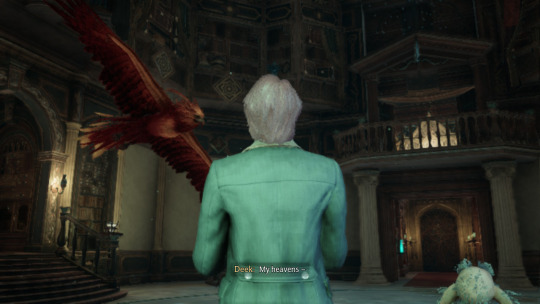
PHYSICAL APPEARANCE:
Age: 5th year-17 / 7th year-19
FAMILY:
Mother: Dead
Father: Dead
Extended family: A significant amount of unnamed aunts and uncles. He doesn’t like them much, and from the sounds of it, the feeling is mutual.
CHARACTER:
Eye Color: Violet
Hair Color: Magenta
Height: 6’1 ft
Type of body/build: Sleeper build. He looks skinny but he’s actually very fit! That said- he'd probably be even healthier if he gained a little more weight.
Skin tone: White.
Scars: He has a mysterious burn mark on the back of his left hand
Predominant feature: Pink hair
Looks like:
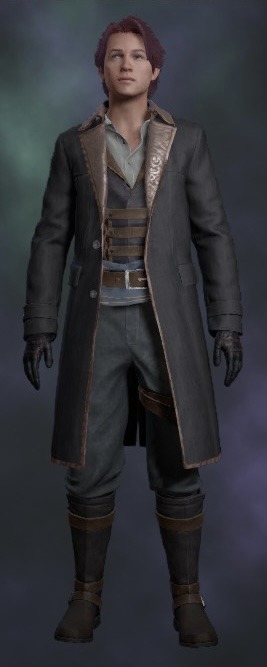
Physical Health: Excellent.
Mental Health: Dying inside. He’s been through a lot of trauma and microtraumas in his life, including the events of the Hogwarts Legacy Game. Someone get this man a therapist.
FAVORITES:
Allan’s favorite color: Pink or purple
Favorite Music: Anything played on an Ocarina.
Least favorite Music: Classical. He just doesn’t like the combinations of sound of artists such as Mortzart that we now consider classics.
Food: Give him a good turkey leg or medium rare beef and he will devour it.
Literature: Sherlock Holmes- He finds he can relate to the now famous detective, but he would never say it. He wouldn’t want to sound pompous.
Expletives: He usually is quite creative and makes up his own most of the time.
Mode of transportation: Highwing the Hippogriff.
ATTITUDE:
Most at ease when: In a darkly lit room with lots of space to roam freely, i.e. the Room of Requirement.
III at ease when: Surrounded.
Priorities: He puts others first, no matter who they are, friend or foe, regardless of race.
Philosophy: He is a levelheaded and compassionate man, who regards all life as important, and finds a childlike fascination in everything ordinary and grand.
How he feels about self: He tries not to think about it, but he is proud of who he’s become, he just wishes he’d have done better in life thus far. He would give anything to somehow save those who got hurt or killed under his “protection”.
PERSONALITY:
Greatest strength: His compassion and strategic judgment.
Greatest weakness: Also his compassion- in a sense, and his own survivors guilt.
Biggest vulnerability: He doesn’t open up to anyone- but you’ll certainly know he trusts you if he’s comfortable enough to tell you about his past. Otherwise, he’ll avoid it.
TRAITS:
Optimist or Pessimist: Optimist. He sees the good in everything except himself.
Introvert or extrovert: Introvert! Social interaction exhausts him to no end, unless its close friends.
HABITS:
Drinks: Sometimes. A butterbeer here and there, and when he’s older probably some wine. But even in his old age butterbeer will always be his favorite.
Hobbies: Taking care of beasts, painting , Duelling, and inventing of all kinds- including taking a scientific approach to magic for these inventions and experimenting with Ancient Magic.
How does he spend a rainy day? Outside, rain or shine, unless its super windy and possibly dangerous outside, in which case you’ll find him playing with his beasts in the Room of Requirement.
BACKGROUND:
Type of childhood: He grew up migrating from family to family, at first from aunts and uncles, to foster care. Eventually, he was simply shoved in an orphanage, after most families realized he was just to much trouble.
Most important childhood event that still affects him: When he was about five, like many kids, he had to a degree SOME magical properties. His parents, being intelligent people, picked up on those slight signs and despite being Muggles came to the conclusion there must be more people like their son. In an attempt to make his life potentially better, they tried and succeeded in finding the Wizarding World through the smallest breadcrumbs. Unfortunately, this attracted the interest of some radical Pureblood Supremacists who burned down their house with the family still trapped inside. Both Allan's father and mother perished, but he survived, but not without a constant reminder of the painful memory. His left hand got trapped under some rubble causing a horrible burn. Although he was saved and pulled out of the fire by some kind neighbors, he will forever have limited nervous functions and mobility in his left hand, along with a permanent scar. He now covers up the scar with gloves, however his damaged hand gets random phantom pains from the nerves not healing properly. Sometimes it hurts enough that his hand shakes, which is why he sometimes has to rub his left hand.
Drives and motivations: He wants to save everyone he possibly can. He always wants to help, even at his own detriment.
Talents: He is very artistic and logical at the same time, even capable of combining the skillsets of magic and science to use together in formidable new ways.
Extremely skilled at: Ancient Magic, Drawing, scientific examination
Extremely unskilled at: Sitting still, pottery, Divination
Good characteristics: Compassionate, kind, intelligent
Character flaws: Low self-esteem, survivor guilt, clingy to people he cares about
Mannerisms: Verbal: He sometimes, when asked about any particular subject, will rant on and on if he knows a lot about said subject.
Physical: When he's nervous he rubs his left hand where his burn mark is. When he's thinking hard he taps his chin or cheek, and when he's uncomfortable and around someone he trusts, he'll stand slightly closer to them.
Peculiarities: No one knows if he dyes his hair or jinxes it, and no one cares to ask because he doesn't answer.
Biggest regret: The death of professor Fig, and in 7th year, his failure to help Sebastian, who inevitably goes to Azkaban.
Minor regrets: Any wizards or witches he has to kill do actually weigh on his heart. He doesn't like hurting or killing anyone, especially because he doesn't know their backstory.
Biggest accomplishment: Defeating Ranrok- obviously, and less obviously, a more personal but still large accomplishment for him was adjusting to the Wizarding World's society. (For example how homophobic the Muggle World would have vs. how generally accepting of it the Wizarding World is.)
Education: A Christian Orphanage that doubled as a school.
Religion: Raised Christian, but doesn't REALLY follow it.
Finances: Depends on what he can steal. He doesn't have a home to go back to over the summer, so most of his belongings are stuffed in his coat, which he has an Undetectable Extension Charm. He used to stay with Fig as a sort of "apprentice", but after 5th year he usually just wanders around the Highlands on his own, since he has nowhere else to go.
Char's darkest secret: His past. He never talks about how horrible his life was or is, simply out of principle to not drag anyone else down.
Does anyone else know? He may tell you if he trusts you enough, but it's unlikely. He might have told Sebastian around 7th year. (And in roleplay blogs I believe the only other MC that knows (As it stands of writing this post) is @not-that-gilbert-blythe, because it was a one-off comment he made about his burnt hand. He never fully explained how his parents died or why they died, just that he'd been in a fire as a kid.)
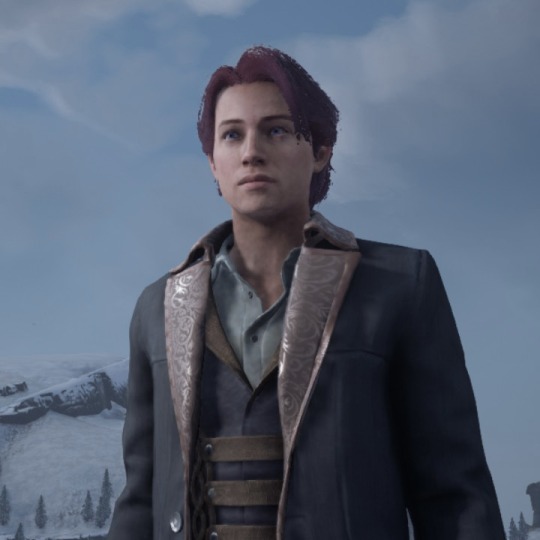
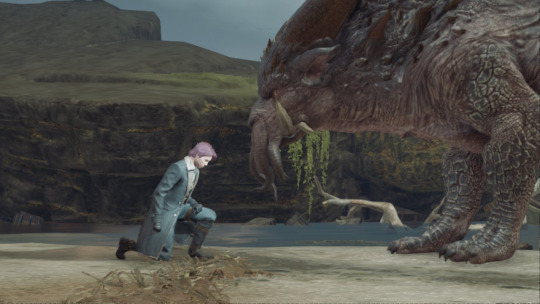
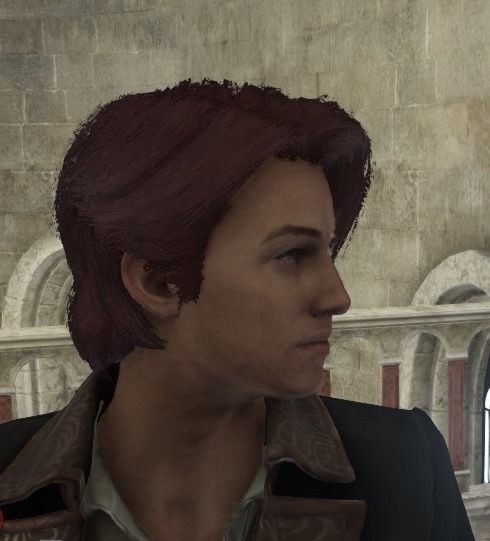
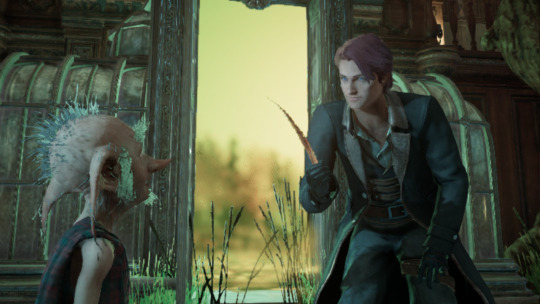
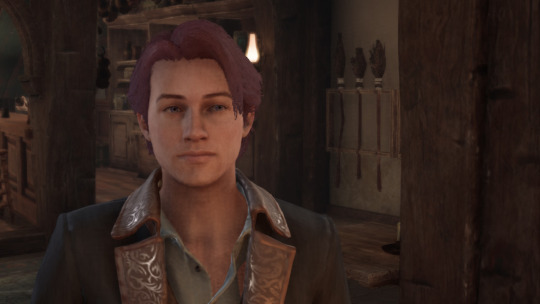
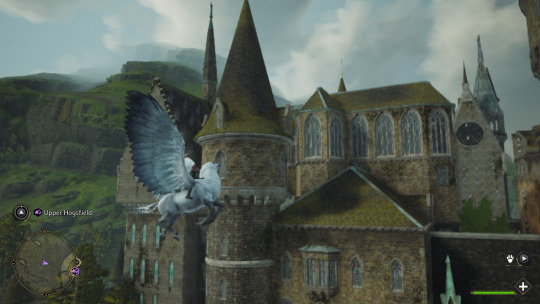
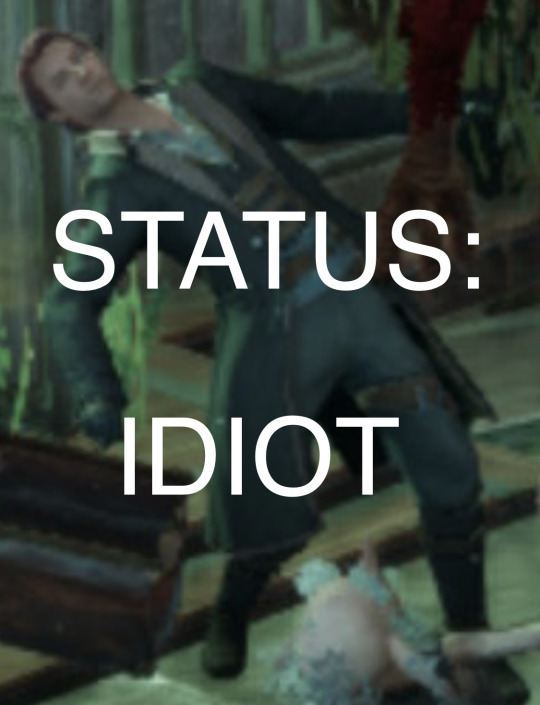

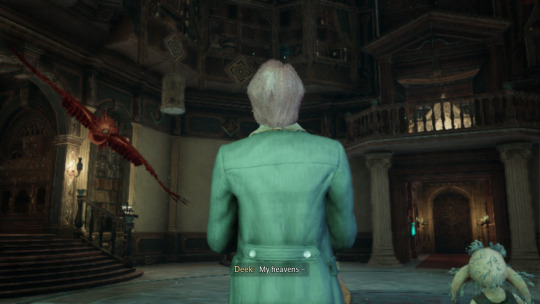
Some screenshots because I take too many :)
30 notes
·
View notes